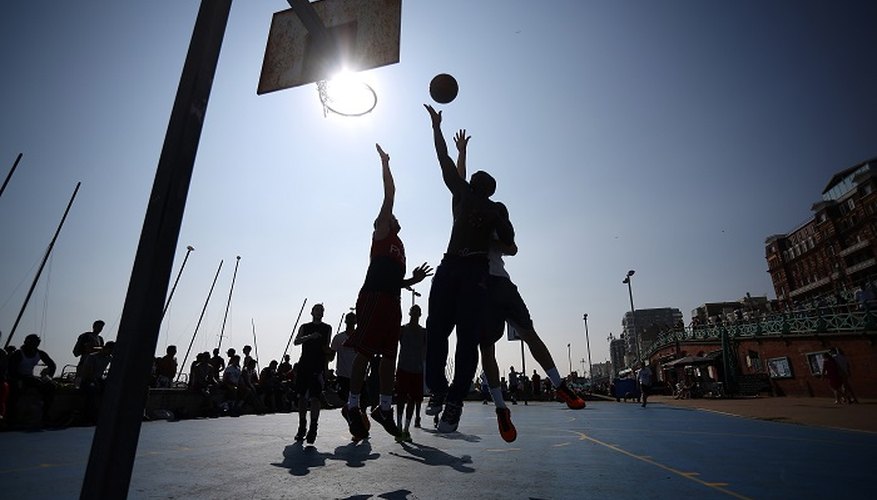An officiating staff at a basketball game has a minimum of five people. They can include a referee, who is in charge, an umpire, a scorer, a timer and a shot-clock operator. In some cases there can be as many as eight people on an officiating staff. A staff of eight will include a referee, two umpires, a shot-clock operator, two scorers and two timers. After the start of the game, the duties of an umpire and the referee are the same.
Court position
The umpire positions himself on the court in which he is opposite from the referee or other umpire (if there is one) so that he can see what is happening on his assigned portion of the floor. Because of the speed of the game and the various stoppages in play, the umpire will constantly change where he stands on the floor. After each dead ball, the umpire will rotate spots with another official. This gives the umpire the advantage of seeing the game from all areas of the floor.
- The umpire positions himself on the court in which he is opposite from the referee or other umpire (if there is one) so that he can see what is happening on his assigned portion of the floor.
- This gives the umpire the advantage of seeing the game from all areas of the floor.
Jurisdiction
In men's basketball, the umpire has jurisdiction over what is happening on the court 30 minutes before the start of the game. In women's basketball, the umpire has jurisdiction 15 minutes before the game starts. The umpire is responsible for enforcing pre-game rules such as making sure no one dunks the ball in warm-ups, making sure that each team is in proper uniform and making sure no-one is wearing jewellery. Typically, the umpire will watch half of the court and the referee will watch the other half. The umpire will be in charge of monitoring the whole court when the referee meets with the team captains before the game.
- In men's basketball, the umpire has jurisdiction over what is happening on the court 30 minutes before the start of the game.
Signalling
Any time the umpire calls a foul it is his duty to report the foul to the scorer's table. The umpire will let the timekeeper know to stop the clock, report the violation and offender to the official score book and signal with his fingers the number of foul shots to occur. When the umpire calls a foul that has no free throws to follow, the umpire must indicate the spot on the floor from where the ball is to be thrown in and indicate which team is to throw the ball in.
